The Okanagan Valley, a European space since 1859, hasn’t shed its colonial roots. Becoming a part of Canada in 1871 didn’t do a whole lot about that, partly because when you colonize a space, that act of coming to a “wilderness” becomes a foundation. That the area is considered to be Canada is one example. Here’s another from a spot 300 miles South in our region.
Mool Mool
This spring was the winter camp of Skloom, brother of Yakama Chief Kamiakin. Kamiakin’s camp, and the Ahtanum Mission of Father Pandosy, the alleged founder of European culture in the Okanagan Valley, was over the low ridge to the north. Not far.
Those are the facts. This is a fact, too:
One of the Military Block Houses of Fort Simcoe
During the 1855 war with the Yakama (an effort to subdue them after American incursions into their territory, contrary to treaties, plus retribution for a rape,) Skloom’s camp was turned into a military fort.
It had two purposes: one to block Yakama travel on the Eel Road down the Kittitas, a vital route to the Columbia River, and another to safely kill a few Yakamas, should it come to that. Hence the blockhouse. Here it is inside:
Firing Points in the Block House
Even the idea of a history is colonial. It is powerful. And it’s a good thing. It’s a good idea to add its storytelling methods to memory. However, one might well remain aware that the rule of origins is always present and capable of taking over, like this:
The History of Fort Simcoe
Not the History of Mool Mool
Mind you, there’s a little bit of Mool Mool here. Look:
So, as far as the land goes, there were resources: water, timber, grass and weather. These are important things, of course. Still, there’s no mention of the connection of the spring to Pahto, the ancestral volcano, or how the fort blocked off its story, which was history many thousands of years old, just in a completely different form.
When the land is history, then taking it over is the rewriting of history, isn’t it? And the future.
That’s ignorance, certainly, yet it’s more than that. It’s also the assumption that resources important to the US Military are the same resources important to the Yakamas, or should have been. Apart from being rude, that’s a pretty big assumption.
It rather looks like the list of resources was simply transferred from Major Garnett (under whose command the fort was built) to the Yakama.
During the US Civil War Garnett served as a general in the Confederate Army and was killed, presumably by a Union volley, in a botched retreat. His dying words, however, were that he had been shot by his own men.
Simply, what you see of the environment of the spring in the image below are not physical resources.
There was more. When the Yakima War was more or less resolved in 1859, Fort Simcoe (Mool Mool was now forgotten) became an Indian Agency, complete with a school.
President Lincoln, Yet!
Was that a snub at Garnett?
Here’s Wilbur:
In the “historical” narrative below, we see him dealing with a Wanapum ceremony, showing how an Indian Agent (and a pastor) was more an agent of the law than the law itself. After travelling an afternoon and the morning from Mool Mool, he arrives, and then…
Springing from his hack he walked to the door of the dance hall, where nearly the entire band of savages had collected as soon as they saw him make his appearance. The Indians at once attempted to block his way, as they had the Indian policemen previously.
Then he demonstrates his Christian charity.
And then trouble began. His long, muscular arms began to revolve like the fans of a great windmill. The “siwash” obstructors were pitched headlolng this way and that and were soon fairly running over each other in their attempt to escape those terrible flails. The road cleared, he seized. the rascally old dreamer by the nape of the neck and literally yanked him out of the house headforemost, handcuffed him, picking him up bodily, and then pitched him into his hack, taking a seat by his side.
Then a bit of misinterpretation.
No jeers or laughter followed him as he turned on his way back to the agency, as it had his discomfited policemen a few days previously. Those who were not rubbing their sore spots were simply wondering what was coming next.
https://www.jstor.org/stable/20609923#metadata_info_tab_contents
And that is called history, at least by the Journal of the Oregon History Society. There’s no mention of the failure of agriculturalization of a salmon people (the whole point of the war), the takeover, the imprisonment of Chief Moses there, to help clear central Washington for settlement, and Wilbur’s mission.
Here’s why all this misinterpreted history might matter up north in the Okanagan:
The Skaha Winery Horse
This winery in Kaleden markets French and German wines grown on a syilx horse pasture. (Above Skaha Lake.) The wine is good, too.
It sounds a bit like cultural replacement, all in all. There are, of course, things that can stand to be replaced. To show you that, here’s some background: the 1948 Annual Report of the Okanagan Historical Society…
In it, A.G. Harvey (a British immigrant to Point Grey) writes about q’awst’ik’wt, that part of the water-filled, over-deepened bed of the Okanagan Glacier isolated by massive alluvial fans at Penticton and sx̌ʷəx̌ʷnitkʷ.

Old Fishing Station at sx̌ʷəx̌ʷnitkʷ
q’awst’ik’wt in behind
History like that is a cultural habit. It honours a country but not its land, but for a Brit in British Columbia, it’s a bit like Garnett missing the story of the Yakama. Harvey goes on professorially:
“Labelled ‘L. du Chien’ (Dog Lake) on Anderson Map, 1867; labelled ‘Du Chien L.’ on Trutch maps, 1866 and 1871. Origin unknown.”
Origin unknown! He’s not the first. Look:
In 1827, the lake, q’awst’ik’wt, is not there!
It’s not the only thing about the map that is wonky, either. Archibald McDonald might have been a fur trader, but he sure wasn’t a map maker. A lot of this is guesswork: the 49th Parallel out of place, the Nicola Valley completely absent, and more. It all casts doubt on his placement of the Similkameen and Tulameen Smelqmex, although their placement (different from today’s) might otherwise be accurate.
At least, by 1867, the lake is there (yay), as Harvey attests, although to him its origin is “unknown.” Well, not really. I’m pretty sure that the syilx knew. So, let’s ask Okanagan Falls at the south end of the lake. It should have something to say. Hey, sx̌ʷəx̌ʷnitkʷ, what of it?
sx̌ʷəx̌ʷnitkʷ: I think Harvey is looking for who first called it Lac du Chien.
The dog!
sx̌ʷəx̌ʷnitkʷ: Exactly! Nobody did. It named itself.
Lakes have lips?
sx̌ʷəx̌ʷnitkʷ: No, it’s Sqexe7. It’s a use. Skaha Lake today.
Oh. I thought its name was q’awst’ik’wt.
sx̌ʷəx̌ʷnitkʷ: Well, yeah. That’s its name. Oh, I see. You want it to have only one name.
I do.
(sx̌ʷəx̌ʷnitkʷ stares.)
Really. It stares. Like this:

The Bluff Above sx̌ʷəx̌ʷnitkʷ
Smirking, really.
It’s a good point. Why must a lake only have one name? When a name is a use and not a map tag? So, let’s continue this playful exploration.
sx̌ʷəx̌ʷnitkʷ: That’s it. It’s the difference between calling the pine tree up on the hill “the pine” or calling it “that old snag up there,” and waving offhand in its general direction.
Ah, so a term of endearment.
sx̌ʷəx̌ʷnitkʷ: Everything has many names, and with many names many identities. Take me, for instance, do you know, and you might find this hard to believe, but I am a chunk of uplifted seabed from Japan.
No!
sx̌ʷəx̌ʷnitkʷ: Ato ni, inu wa seishiki meishō ni narimashita!
????
sx̌ʷəx̌ʷnitkʷ: “Later, Dog became the official name.”
Harvey?
I’m playing around like this because to just refer to the documents is to give them too much credit. The story does not begin with them. They presuppose the primacy of government and law and that these are the country. That is pretty much the process by which Canada and British Columbia were colonized this place, and the process by which its living landscapes have been reduced to weeds. Something is off about that. Here’s the reference:
Okanagan Historical Society, 1948.
sx̌ʷəx̌ʷnitkʷ: Yup, that’s Harvey. He was just like you. Wanted one name forever. Listen to this: “Changed in 1930 to ‘Skaha’ to agree with the local name,’ states the Chief Geographer.”
Yes, I saw that, but who was that chief guy? Sen’klip?
sx̌ʷəx̌ʷnitkʷ: God, I think.
Well, there you have it. God’s another guy with lots of names. And that’s not a problem. Without them, though, we’re just left with land on which a country, say Canada or the United States, can build whatever it wants, in its self image as a place of settlement, and then to take that settlement as the country. That’s just too convenient. Which is why I want to throw doubt on my thoughts, and to have a little fun with them, too. I don’t, after all, want to profess.
sx̌ʷəx̌ʷnitkʷ: This is the best part: “However Okanagan Indians say ‘skaha’ is not their word for dog, but is that of the Shuswaps, and that the local word for dog is chokowapee. (Parham, 40).” What kind of language is that?
Something out of Hiawatha?
sx̌ʷəx̌ʷnitkʷ: You tell me. Another spelling is kaekuwapa. The Colville-Okanogan Dictionary lists it as: k-kwáp-a. Same for horse! Sqáxa? is just a word stem.
Like a flower?
sx̌ʷəx̌ʷnitkʷ: More like a tree. You can’t say “sqáxa” and think you’re meaning a war horse decorated in silver to blind its enemies. It branches and leafs out. It is woven into where it is and what it is doing. You can say s-n-kl-c’a?-sqáxa?, which is ‘horse’, or just lec’-sqáxa?, which is “whip a horse,’ or even s’en’t’ews’cqáxa?-tn.
What’s that?
sx̌ʷəx̌ʷnitkʷ: Barn!
Well, that’s fun! A horse by another name:
Frank Richter’s s’en’t’ews’cqáxa?-tn at Inglewood in Central Keremeos, 1970
Frank, if you will remember, is the man who turned much of the smelqmex land in the Lower Similkameen into property and then bought and sold it at will.
And on we go:
sx̌ʷəx̌ʷnitkʷ: No, it’s not a barn. Good grief. You’re close, but sqexe7 means “domestic animal.” “Buddy” would be a better translation. “The world that loves you and looks for a sugar cube in your hand.”
And you came from Japan for that?
sx̌ʷəx̌ʷnitkʷ: Wouldn’t you?
The point of this method is that the story is there all at once. We can’t create it. We turn it this way and that in our hands and see different parts of it. We can only see it fully as the sum of our attention. A horse and a dog are both sqaxa and kwáp, because of their relationships to old stories, not because of a species identification. They are named after the pity they took on people and how they helped them, separating themselves off from the other animals. They are related to how they stand out in the open and are part of the family. It’s in the stories and the language and the experience.

s-n-kl-c’a?-sqáxa? at Spectacle Lake
That’s why I’ve been circling around this idea of horses these last weeks, going back to it with new information and looking at it again and again and again. Whatever else it is, it’s not this epitome of reasonableness that misses the mark entirely:
Somehow, History Has to Be Better Than This
So, now the winery. Remember?
I got onto all of this because of a visit to the Kraze Legz winery in Kaleden, the pre-World War I orcharding settlement in which the new British settlers dressed in white cricket linens and had picnics in the flower-covered hills of the syilx horse pasture as if they were Dorothy and William Wordsworth in the Lake District, idling the afternoons away and writing poems about daffodils. The original idea for marketing the winery was to celebrate 1920s jazz, dancing and all. The dancers on the labels above illustrate that.
Not a lot of this dancing in Kaleden back in the day, but that’s marketing. You have to appeal to the experience of the buyer. Reverend Wilbur could have taken tips from Kraze Legz
When I arrived, the winery had just released a new line of wine, to appeal (as they told me) to restaurants in Vancouver, called “Skaha.” Each bottle boasted a portrait of a war pony, with a long curly mane, with hawk feathers tied into it. I was certain that Skaha Lake had nothing to do with horses. How could it? For 10,000 years, before the arrival of horses around 1780, it was something else. But what?
sx̌ʷəx̌ʷnitkʷ: Hiss!
Hiss, yourself.
sx̌ʷəx̌ʷnitkʷ: I mean don’t worry yourself about it. “Kewap” means horse.
I thought it was “dog.”
sx̌ʷəx̌ʷnitkʷ: In the Colville syilx dictionary, sure, but not on nativevoices.org.
And there it means horse?
sx̌ʷəx̌ʷnitkʷ: Bingo! Inkəwáp means “my horse,” if that helps. Kaleden was a syilx horse pasture.
But horses came late. So, that wouldn’t have been an ancient use, only an adaptation of one.
sx̌ʷəx̌ʷnitkʷ: Try this: “horse” was borrowed from “dog.” And what’s a dog?
A friend with a tail?
sx̌ʷəx̌ʷnitkʷ: And teeth.
Right.
sx̌ʷəx̌ʷnitkʷ: A tame thing, at any rate: bound to human domestic situations, an animal that is part of the human domestic or tribal sphere.
“Kewap” is not species-specific. It describes a relationship, or even a use, if you wanted to look at it like that. These are Garnett’s resource, so to speak. So now, some conjecture. Use, tied to place, is little different than the use of a place. Accordingly, if a horse is bound to human will, so is the space given to it, and like the village, it too is a human space. It is, in short, a space of story, and a place of binding. The binding works from humans to the space, and the space to humans. If you ask the land, though, it might say something different. Buddy?
sx̌ʷəx̌ʷnitkʷ: Oh, come on. You capture a wolf, and tame it. You capture a horse, and tame it. You capture the land, and tame it. It’s about taming.
You mean, it’s “Taming Lake?”
sx̌ʷəx̌ʷnitkʷ: Well, “Village Lake,” maybe. I mean, look at the lake system. There is the big lake, then a bunch of oxbows, then Skaha Lake, which is smaller, then falls leading to oxbows.
I don’t think I quite get it.
sx̌ʷəx̌ʷnitkʷ: The falls, man! They’re a place of binding. The lake leads to them. And what do you bind there?
I don’t know. Horses?
sx̌ʷəx̌ʷnitkʷ: The water! The falls bind the water and people come there and catch the wealth of the water, which is salmon. They bind the salmon.
Oh, I get it. Horses are salmon.
sx̌ʷəx̌ʷnitkʷ: No, dogs. Dog salmon, man.
Oh, right.
So, more conjecture. With oral history and lived experience in mind, the name for dog could be “caught thing,” following the idea of something that is not-huntable because it is in a permanent state of being domesticated. Because of that, its energy is brought into the people, rather than its meat, and that energy needs a place on earth. Here’s my pack leader at the sacred Pillar, an old Secwepemc-Syilx battle site, 11 years ago:

Sometimes he used the leash to pull me up steep banks when it looked like I needed a little help.
But, let’s be careful about names. Horses don’t live in what we call a lake today, but they can live in its environment, in its whole story.
sx̌ʷəx̌ʷnitkʷ: That’s right. Horses come down from the hills and drink from the lake. Look, the translator was Secwepemc, man. He would have used Chinook Wawa to talk to the Hudson’s Bay Company men he was guiding, not nsyilxcen or secwepenctsin.
OK, what’s the Wawa for dog?
sx̌ʷəx̌ʷnitkʷ: Kamooks! You know it as the town of Comox.
Dogtown?
sx̌ʷəx̌ʷnitkʷ: Well, that’s the original name for Okanagan Falls. And what’s a dog?
I dunno. Four-legged animal?
sx̌ʷəx̌ʷnitkʷ: Yes, yes, but what else?
A short horse?
sx̌ʷəx̌ʷnitkʷ: No, silly. It’s a slave. A dog is a slave. When you capture a person and make him part of your village, you call him a dog.
Oh, I get it. When the syilx caught their first horses on a raid, they brought them home as slaves.
sx̌ʷəx̌ʷnitkʷ: No, that’s not what I mean. I mean that when the Secwepemc man rode past and was asked the name of the lake, he said “slave” lake, because it had syilx villages on both ends, and slave-taking between the Secwepemc and the Syilx hadn’t stopped yet.
But that’s not very nice.
Perhaps not, but neither is slavery like this, with its insistence on “space”:
A colonial image of the long land-locked fjord of Okanagan Lake.
At least this colonial image contains a representation of q’awst’ik’wt.
Here’s another image of colonial slavery:
In colonial culture, it’s called an apple plantation, even an orchard. It’s nothing of the kind. An orchard is an ore-guard, a place where the original energy of the Earth is guarded and kept safe. Colonialism doesn’t work like that. It settles. It maps. And it doesn’t keep the Earth or her people safe. Even Mool Mool, the bubbling spring, isn’t looking exactly at its best.
Mool Mool
Categories: Ethics, First Peoples, Grasslands, History, Pacific Northwest

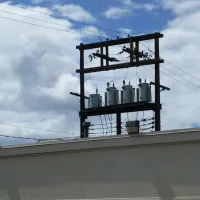
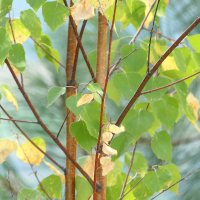
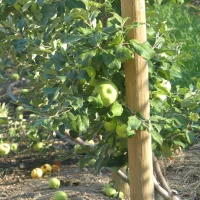

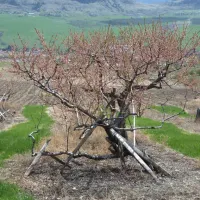




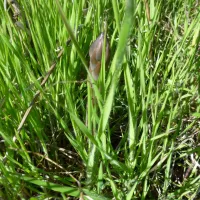























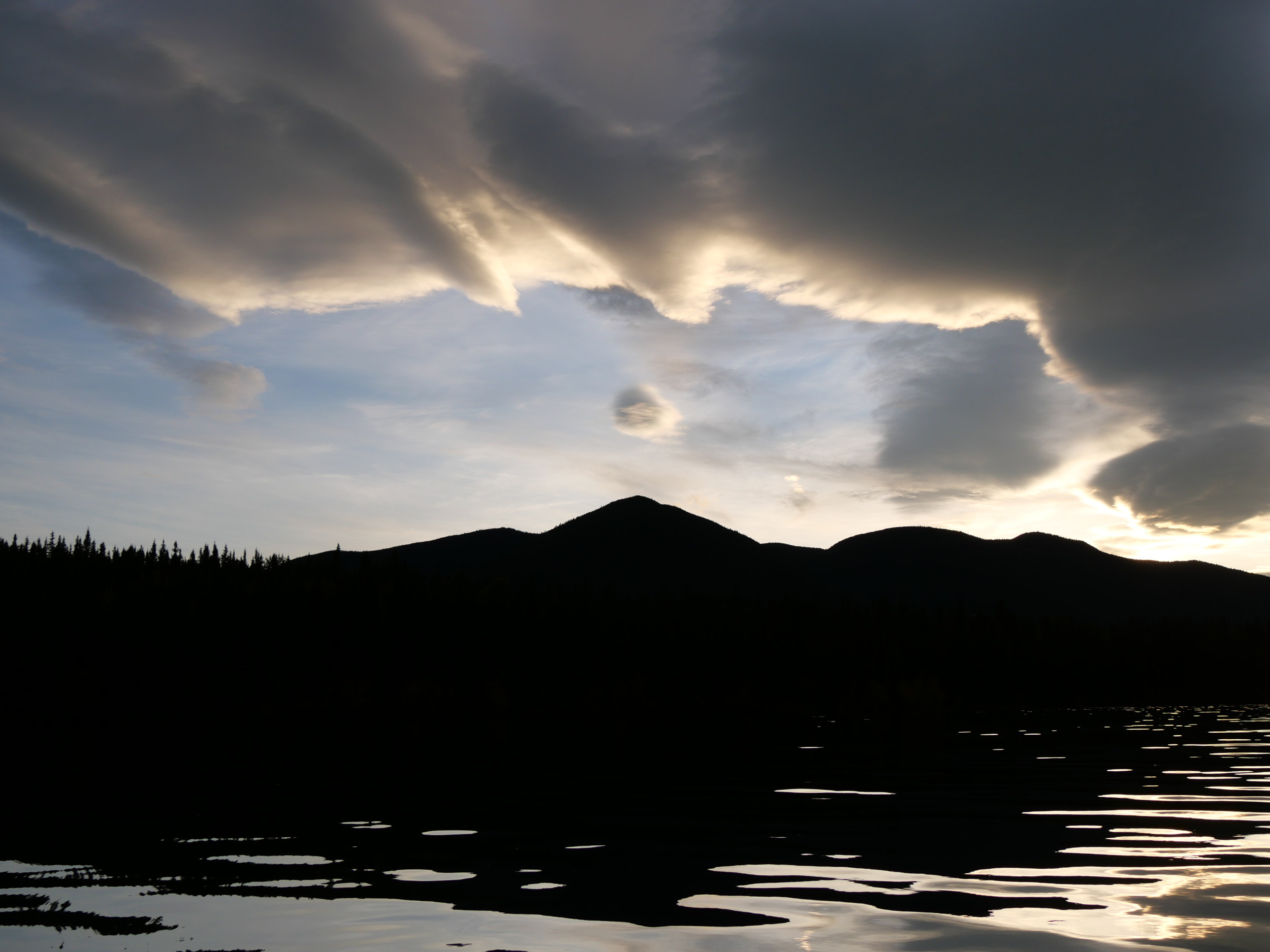
1 reply »